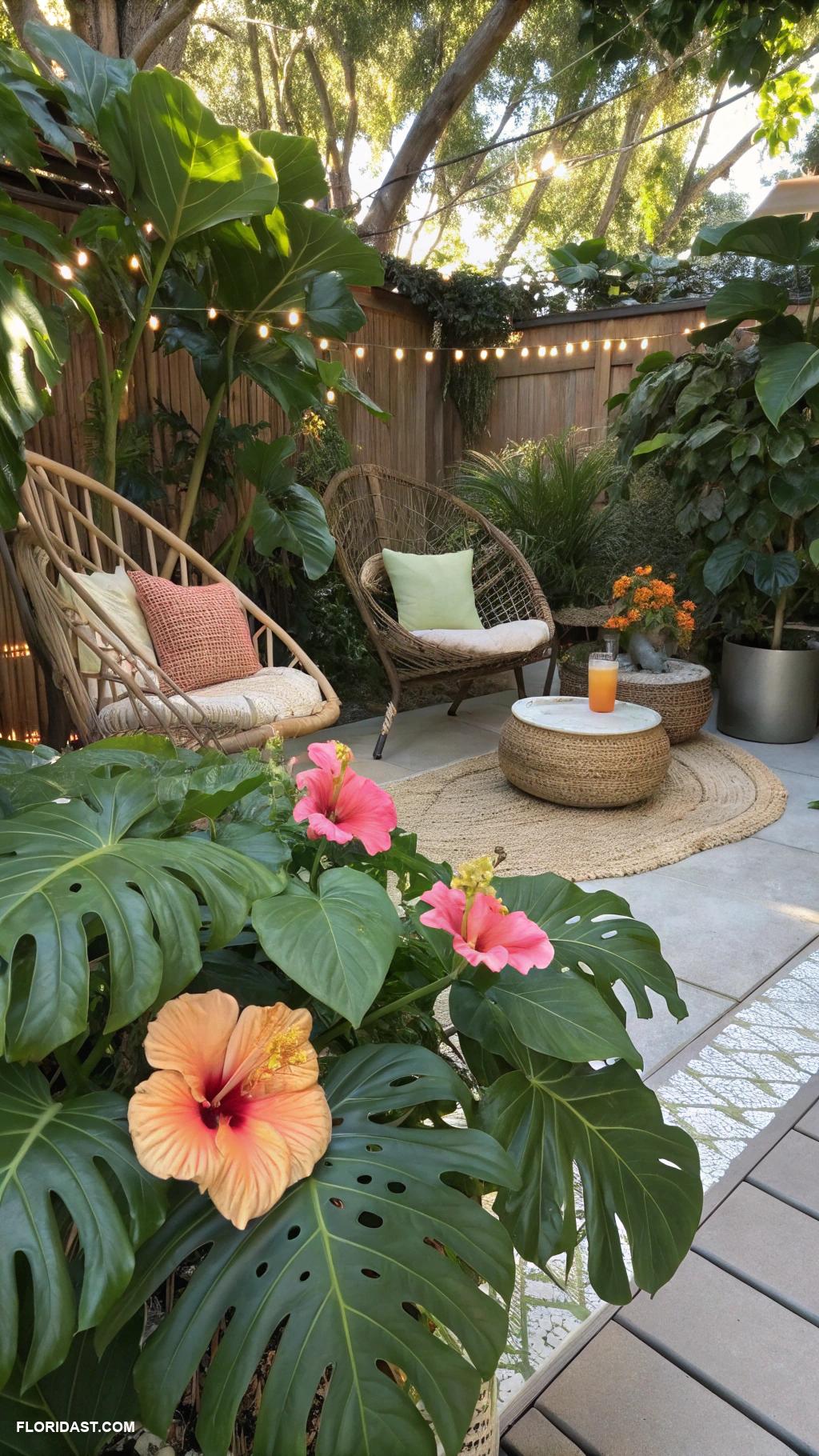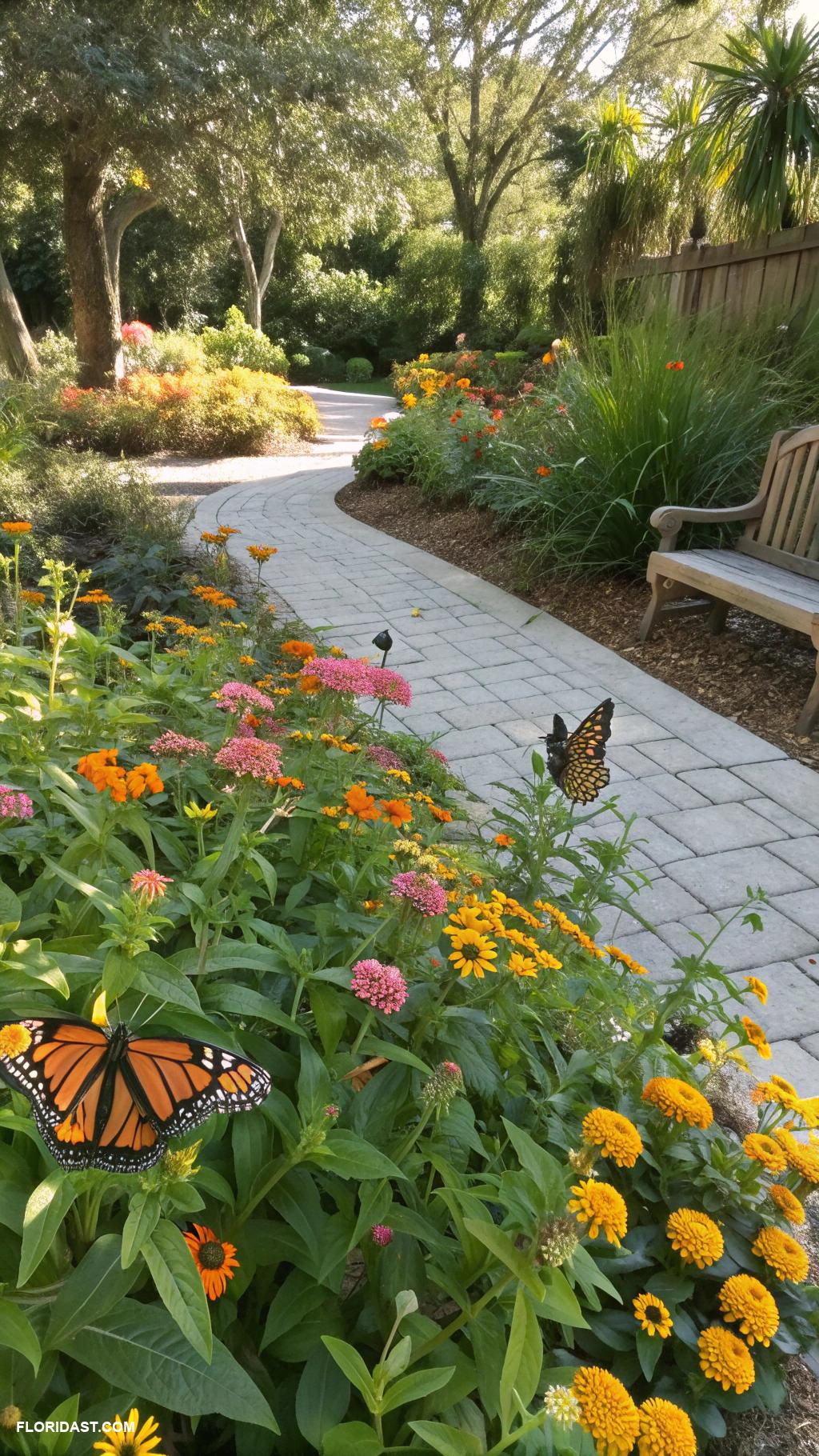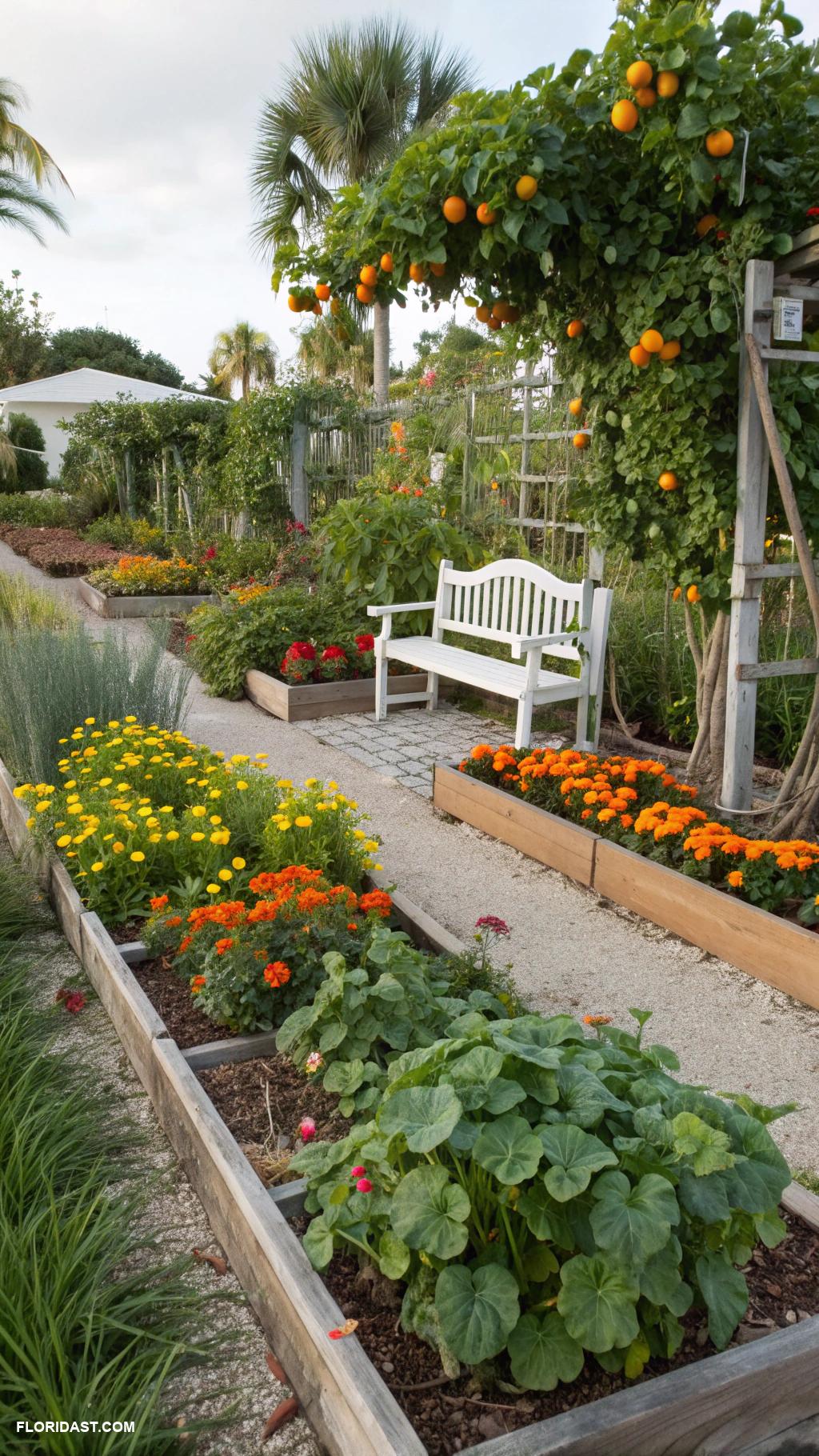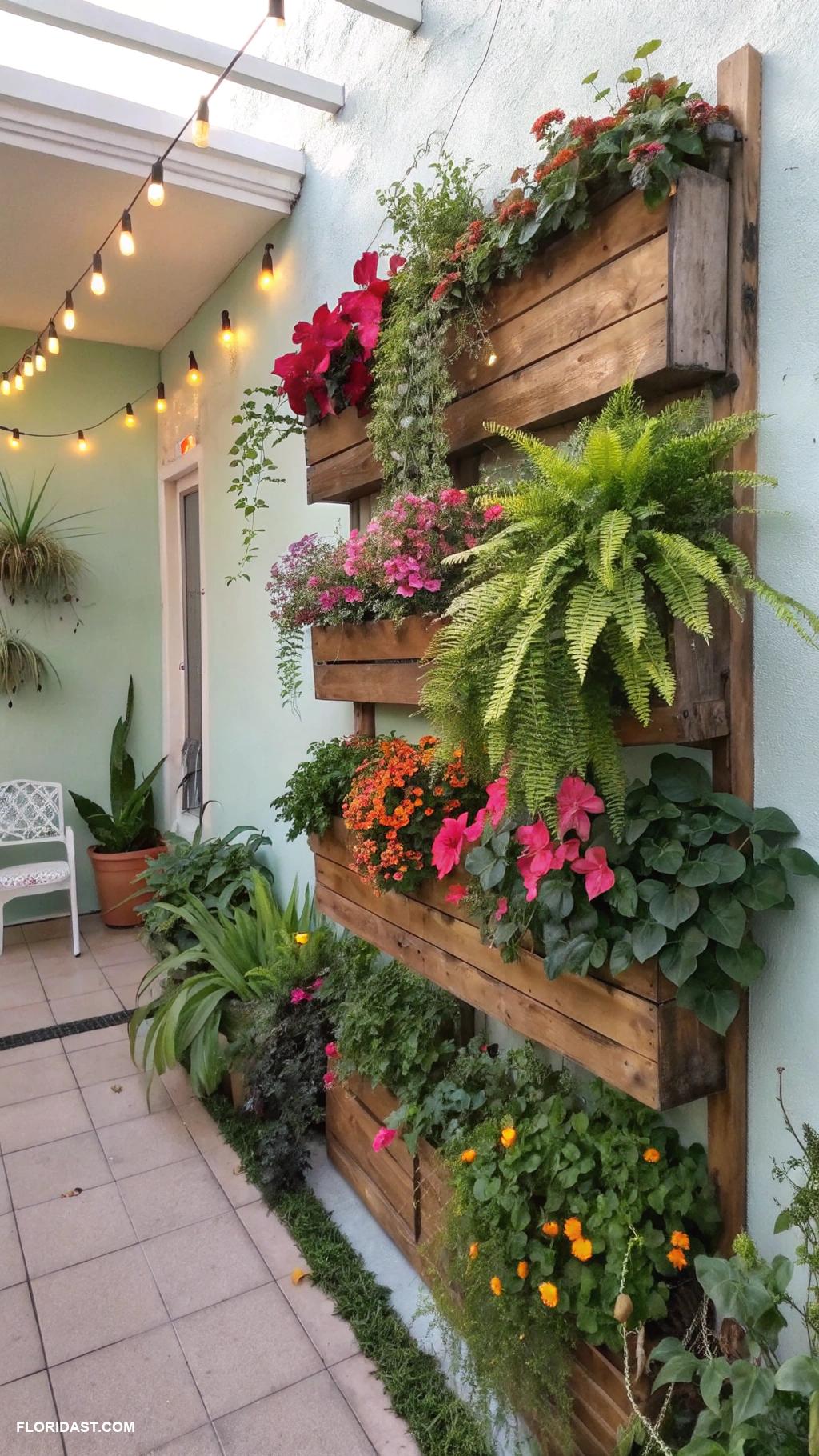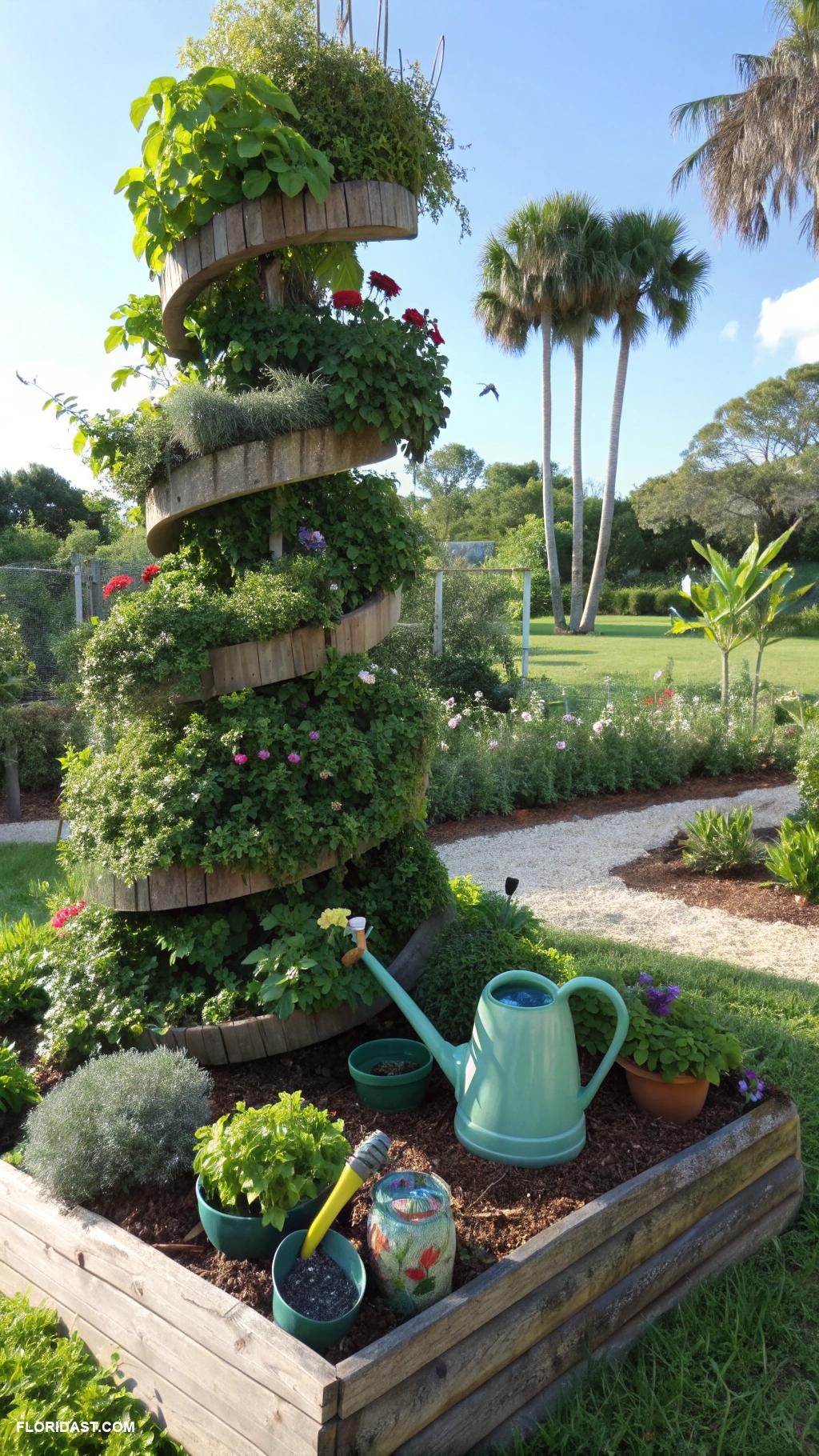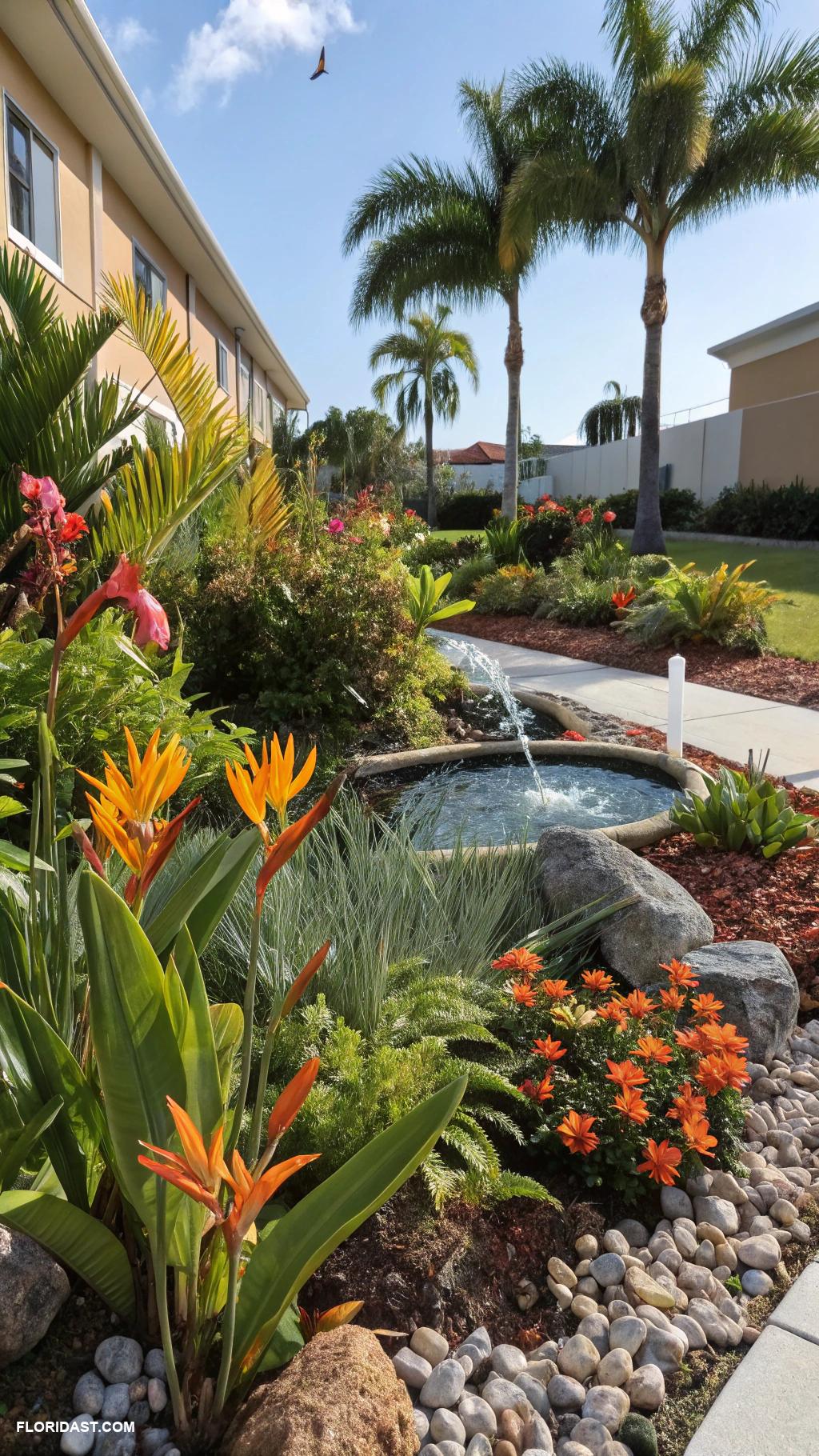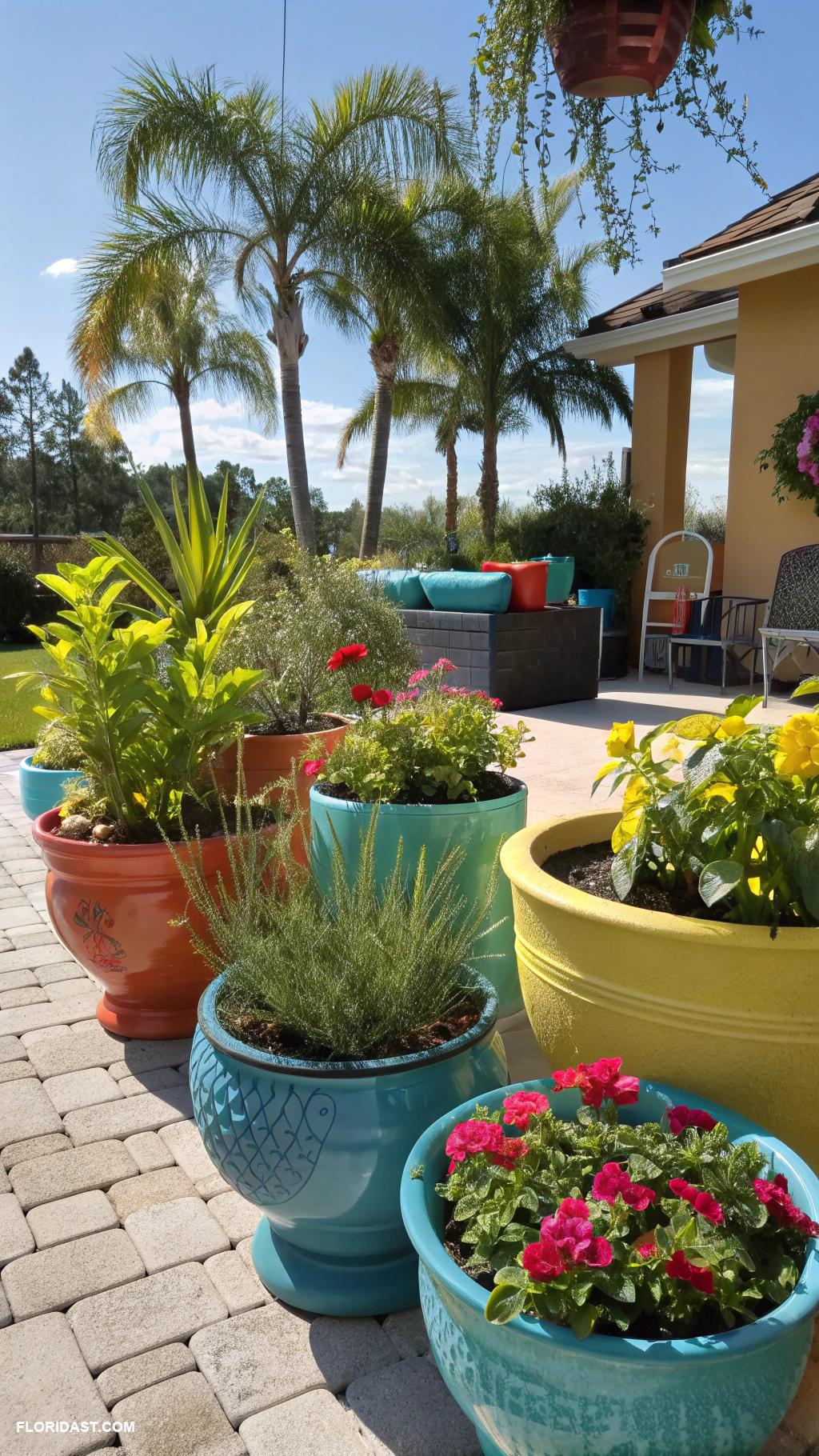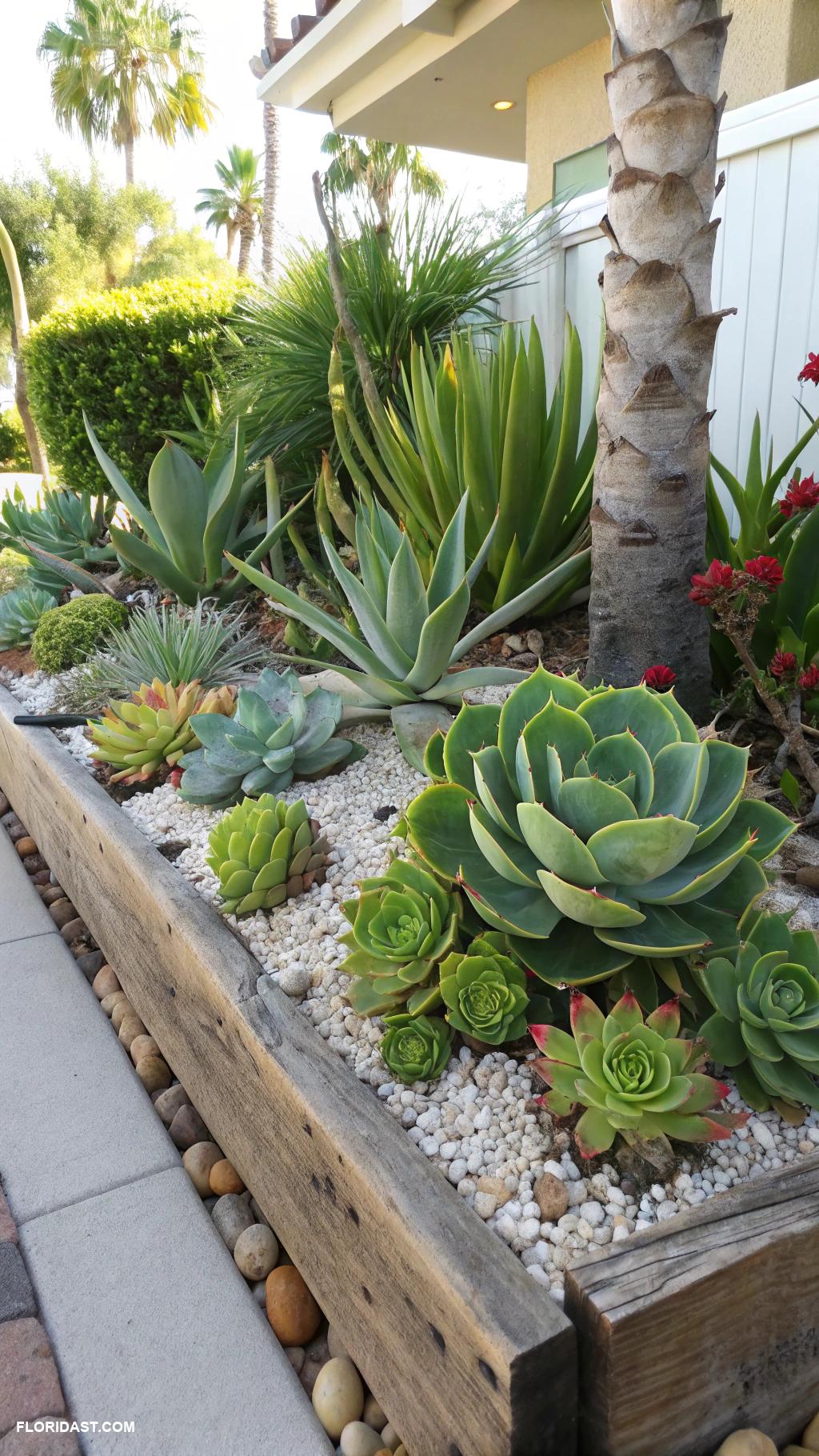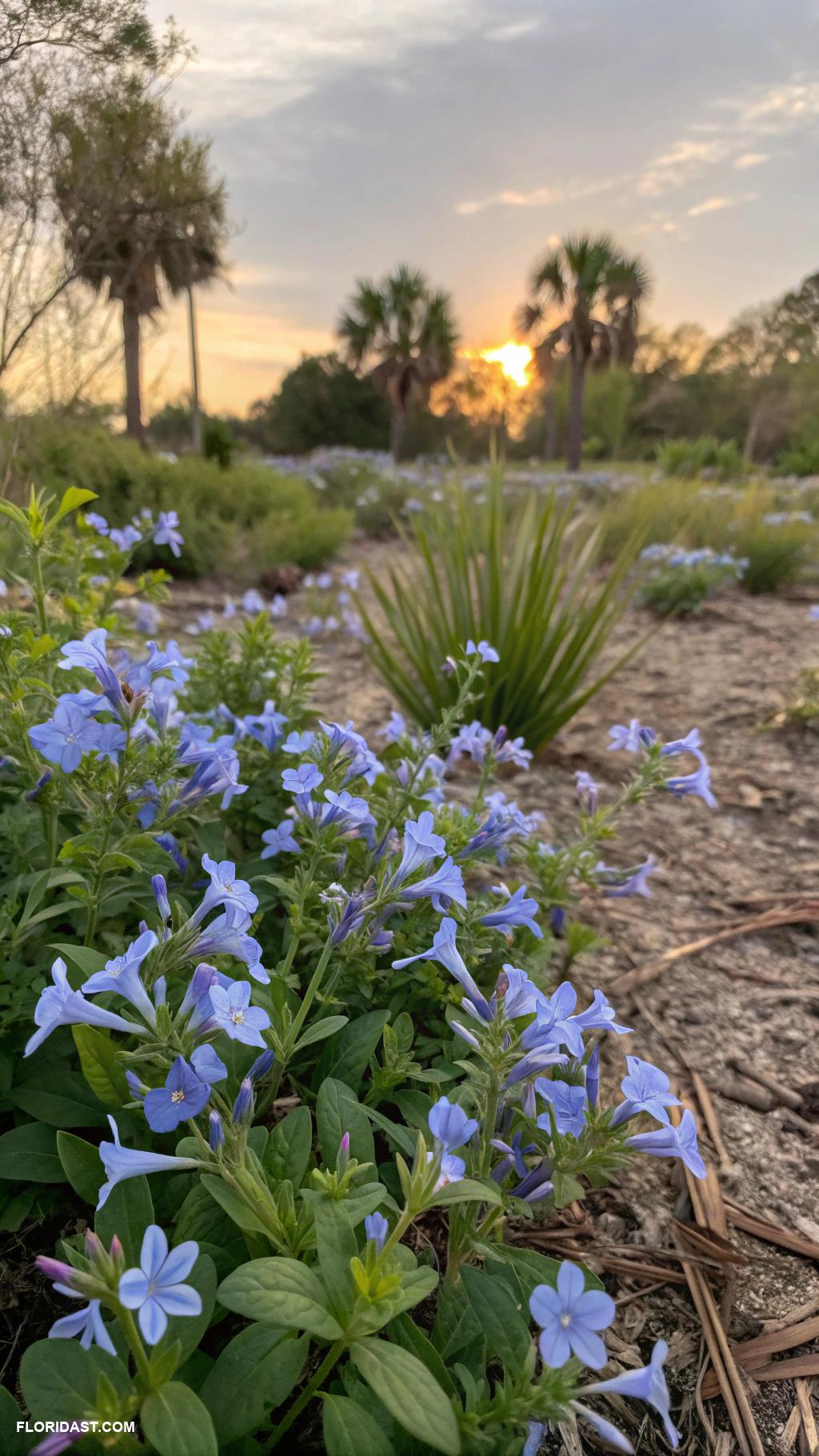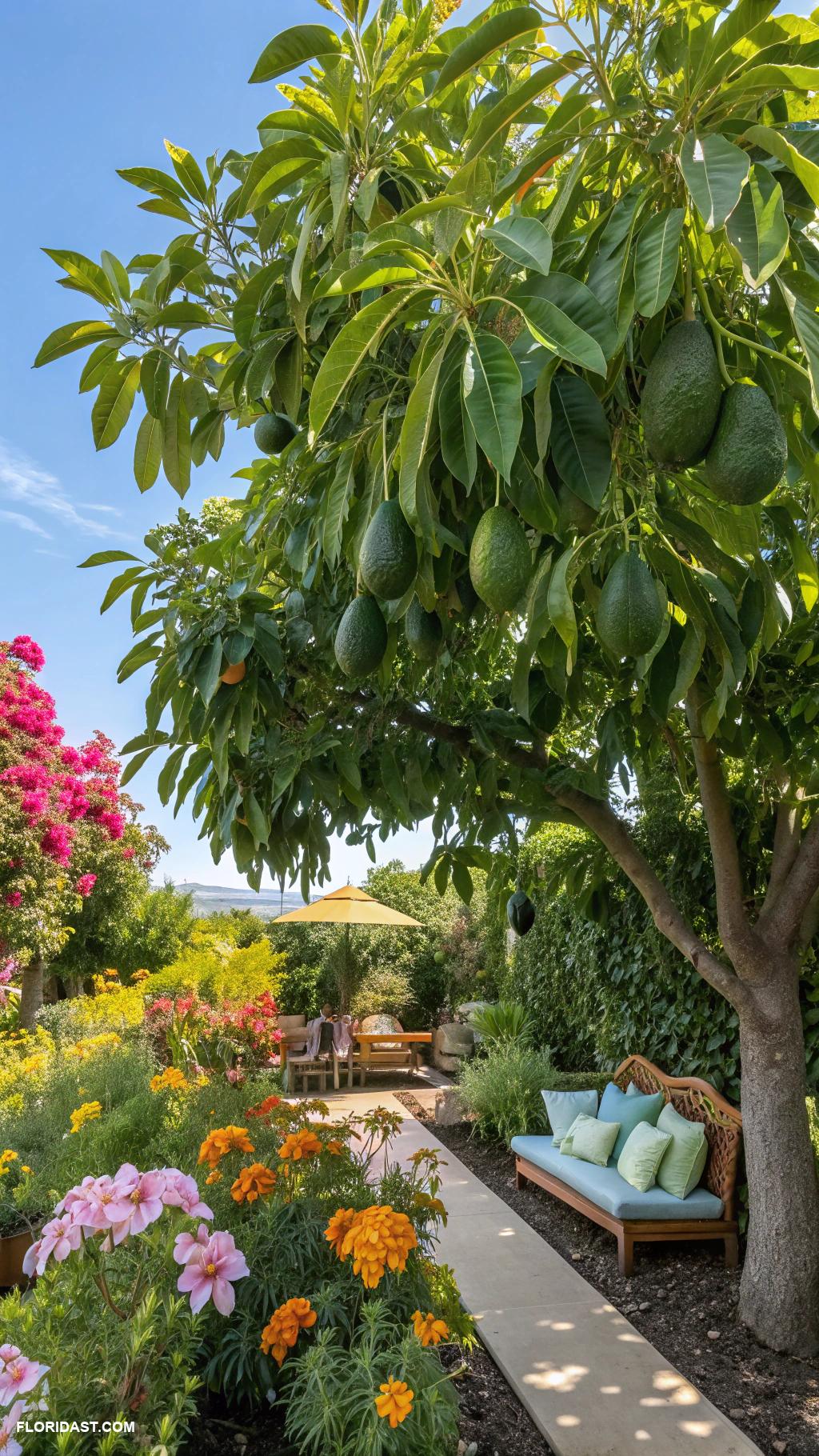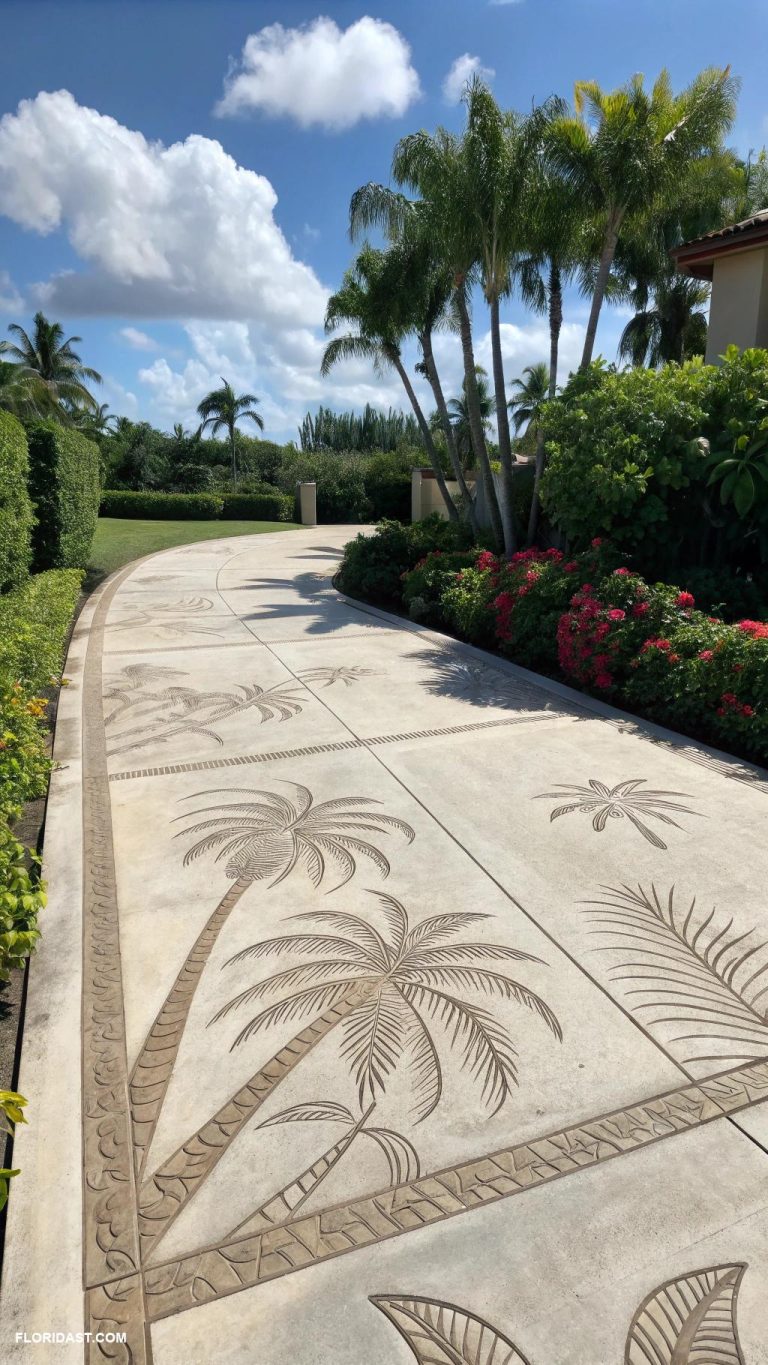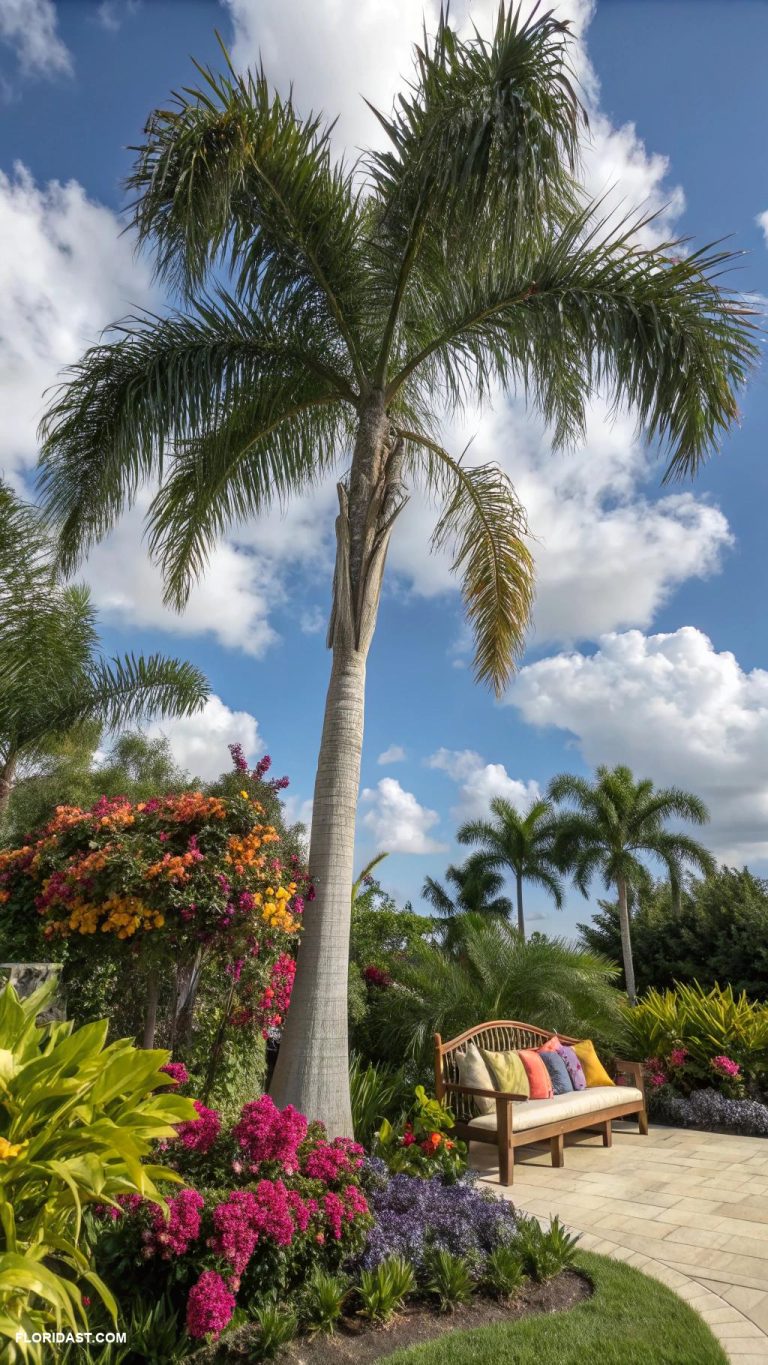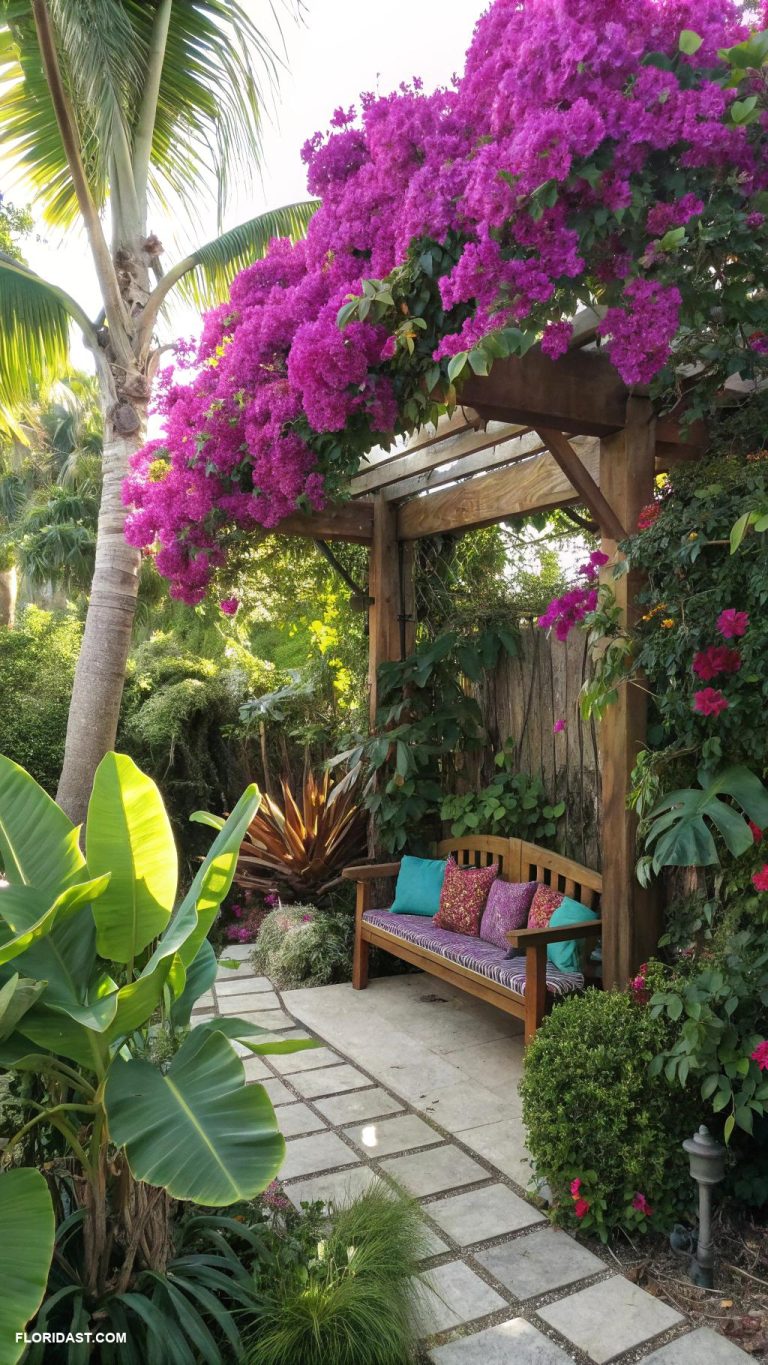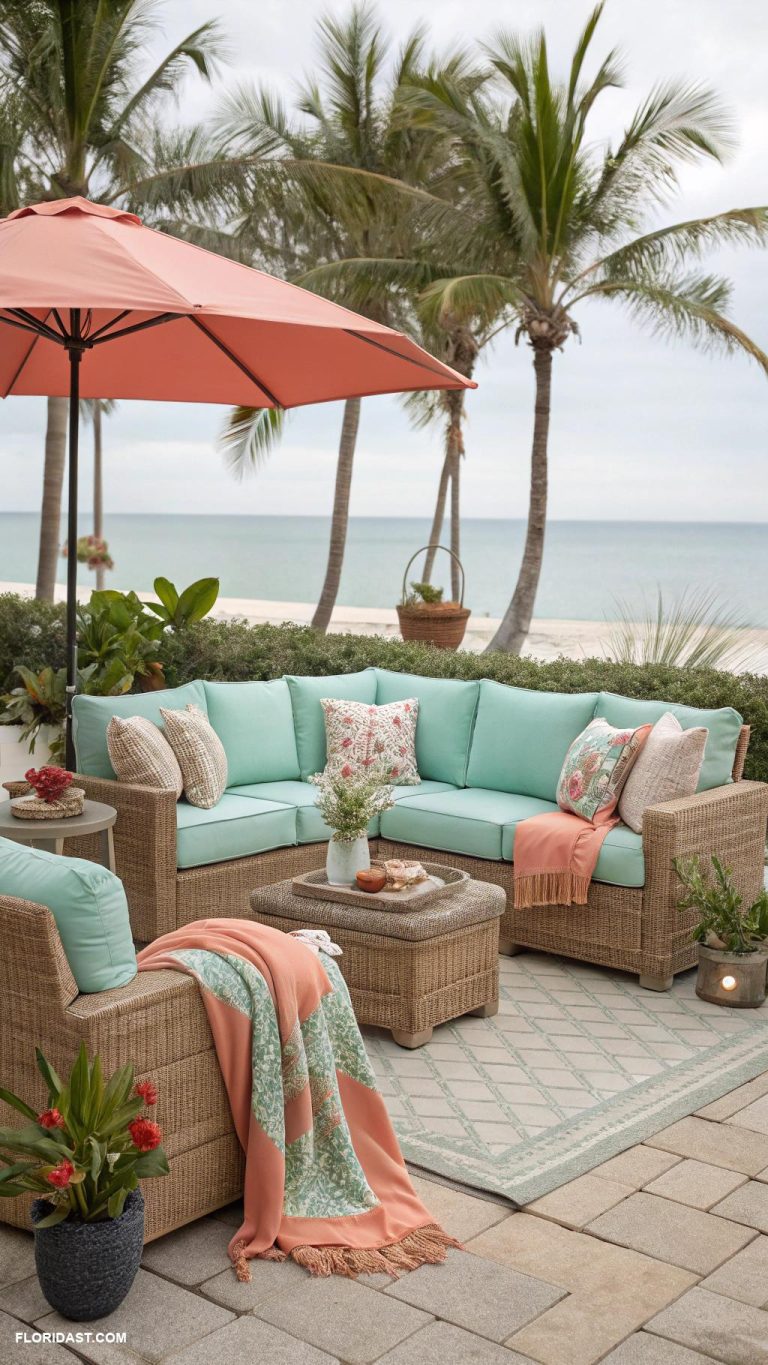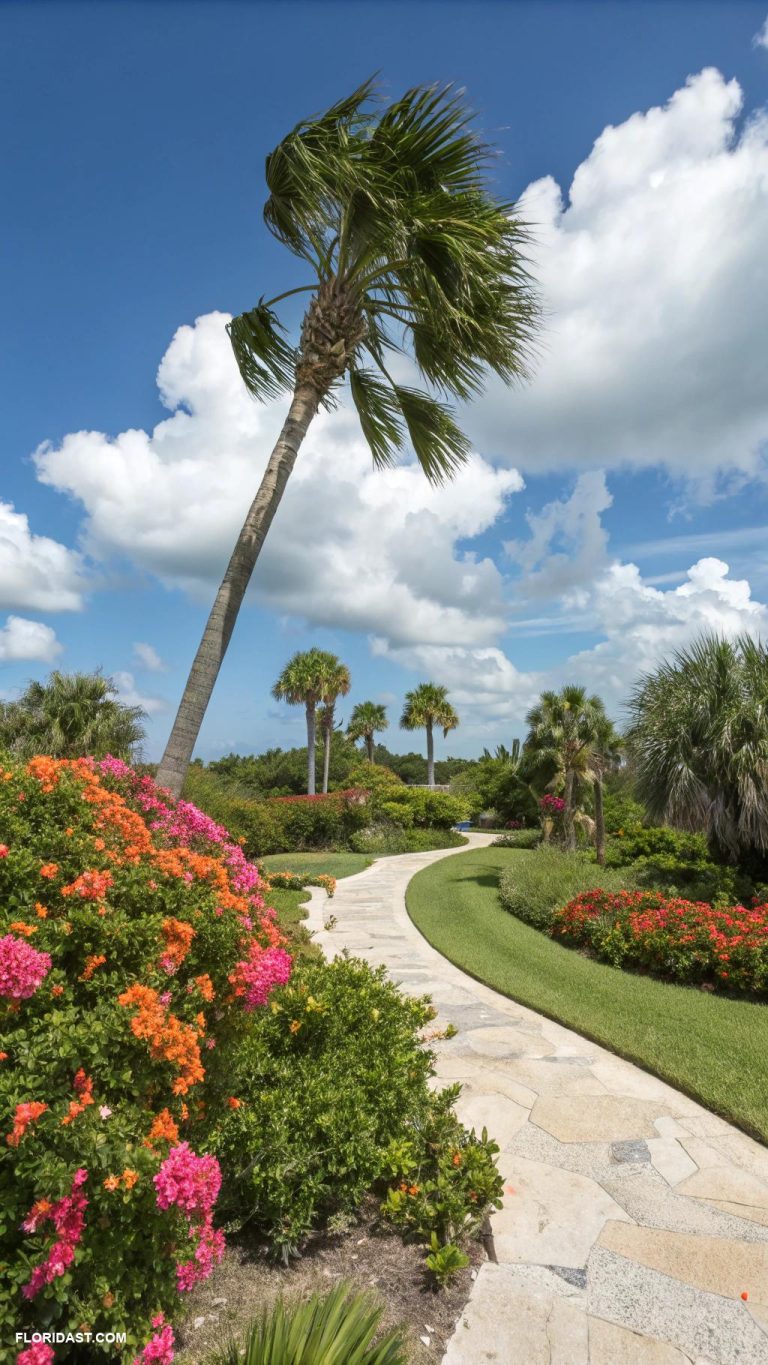10 Tropical Florida Garden Ideas that Thrive in the Sunshine
We may earn a commission through all links on this website. As an Amazon Associate, we earn from qualifying purchases.
Florida’s subtropical climate and abundant sunshine make it the perfect haven for garden enthusiasts, offering a wide range of possibilities for cultivating a stunning outdoor space. With its mild winters and hot, humid summers, Floridians can enjoy gardening year-round, experimenting with a variety of plants, flowers, and trees that thrive in the state’s unique environment.
Whether you’re looking to create a tranquil oasis in your backyard, a vibrant Butterfly Garden, or a lush edible landscape, Florida’s climate provides the perfect conditions to bring your garden vision to life.
Tropical Plants for Vibrant Backyard Aesthetics
Tropical plants can transform your Florida backyard into a vibrant oasis, bursting with color and lush greenery. Varieties such as hibiscus, bird of paradise, and bougainvillea flourish in the sunny climate, adding striking blooms and a sense of exotic luxury. Incorporating these eye-catching plants not only enhances curb appeal but also creates a serene outdoor retreat, perfect for enjoying warm evenings and gatherings. Pairing tropical foliage with decorative pots and hardscaping can further elevate the aesthetic, making your space inviting and lively.
Butterfly Gardens with Native Flowering Plants
Butterfly gardens featuring native flowering plants are a stunning addition to any Florida landscape, providing vital habitats for local butterfly species. By selecting native plants such as Milkweed, Coneflower, and Firebush, you can create a vibrant and sustainable oasis that attracts pollinators year-round. These gardens not only enhance the beauty of your outdoor space but also promote biodiversity and ecological health in your area. Enjoy watching butterflies flutter among the blossoms while contributing to the preservation of Florida’s natural environment.
Edible Landscaping for Sustainable Gardening
Edible landscaping is an innovative approach that blends beauty with practicality, allowing gardeners to create visually appealing spaces that also provide fresh produce. In Florida’s warm climate, incorporating fruit-bearing plants, herbs, and vegetables into decorative gardens can enhance biodiversity and promote sustainability. By selecting native species and perennial edibles, you can cultivate a low-maintenance garden that thrives year-round while reducing water usage. This method not only supports local wildlife but also encourages a healthier lifestyle through easy access to homegrown food.
Vertical Gardens for Small Spaces
Vertical gardens are an innovative solution for maximizing green space in small areas, particularly suited for Florida’s warm climate. By utilizing vertical structures like trellises and wall-mounted planters, homeowners can create lush, vibrant displays of herbs, flowers, or vegetables without sacrificing valuable ground space. These gardens not only enhance aesthetics but also improve air quality and attract pollinators, making them a perfect addition to patios, balconies, or small backyards. Additionally, with the right selection of drought-tolerant plants, maintaining a vertical garden in Florida can be low-maintenance and highly rewarding.
Herb Spiral for Culinary Delights
A herb spiral is a spiral-shaped garden design that not only maximizes space but also creates a microclimate for growing diverse herbs. By varying the height and orientation of the spiral, you can cater to different plant needs, making it ideal for the warm Florida climate. This vertical garden design allows for easy access to fresh herbs like basil, cilantro, and mint, perfect for elevating your culinary creations. Additionally, the spiral’s aesthetic appeal adds beauty to any garden landscape while promoting biodiversity.
Rain Gardens to Manage Stormwater
Rain gardens are specially designed landscape features that help manage stormwater by capturing and filtering runoff from rooftops, driveways, and lawns. These gardens are typically planted with native plants that can thrive in both wet and dry conditions, enhancing biodiversity while reducing the need for irrigation. By directing rainwater into the garden rather than allowing it to flow into storm drains, rain gardens help replenish groundwater and prevent flooding. Incorporating a rain garden into your Florida landscape not only beautifies your yard but also contributes to a healthier environment.
Container Gardening with Colorful Pots
Container gardening is an excellent way to add vibrant splashes of color to your Florida garden while maximizing space and flexibility. By selecting brightly hued pots, you can create a lively stunning display that complements the lush tropical surroundings. Opt for heat-tolerant plants such as succulents, hibiscus, and bougainvillea to thrive in the Florida sun. This approach not only beautifies your outdoor space but also allows for easy maintenance and rearrangement as seasons change.
Succulent Arrangements for Low Maintenance
Succulent arrangements are perfect for low-maintenance gardens in Florida, thriving in the state’s warm climate and allowing for minimal care. These hardy plants require very little water, making them an ideal choice for busy gardeners or those looking to reduce upkeep. Consider creating a stunning arrangement in a decorative pot or using a shallow dish to showcase various succulent varieties, highlighting their unique shapes and colors. Grouping them together not only adds visual interest but also helps retain moisture in the soil, ensuring they stay healthy and vibrant.
Native Plants for Attracting Local Wildlife
Native plants are essential for attracting local wildlife, as they provide food and habitat for various birds, butterflies, and beneficial insects. In Florida, incorporating species like the Florida and Southern sage, butterfly bush, and coreopsis can create vibrant, wildlife-friendly gardens. These plants not only support pollinators but also help maintain the local ecosystem by requiring less water and pest control than non-native varieties. By choosing native flora, gardeners can foster biodiversity and enjoy a thriving, colorful outdoor space.
Fruit Trees Suited for the Florida Climate
Fruit trees that thrive in Florida’s warm climate include mango, avocado, and citrus varieties like orange and lemon. These trees flourish in well-drained soil and benefit from the state’s ample sunshine and humidity. Tropical fruit trees such as papaya and guava can be excellent choices for home gardens, providing delicious fruits and attractive foliage. When selecting fruit trees, consider their space requirements and growth habits to maximize your garden’s productivity.


